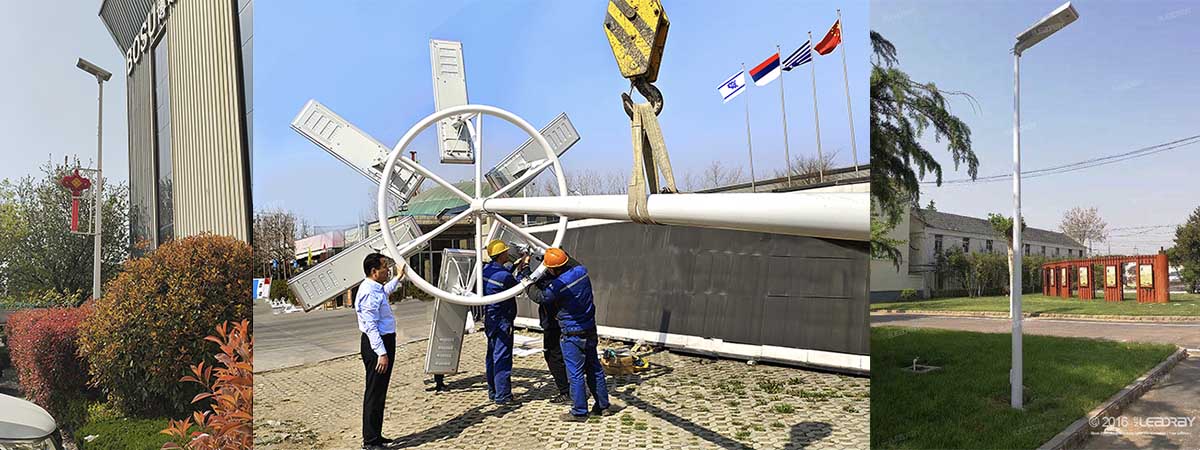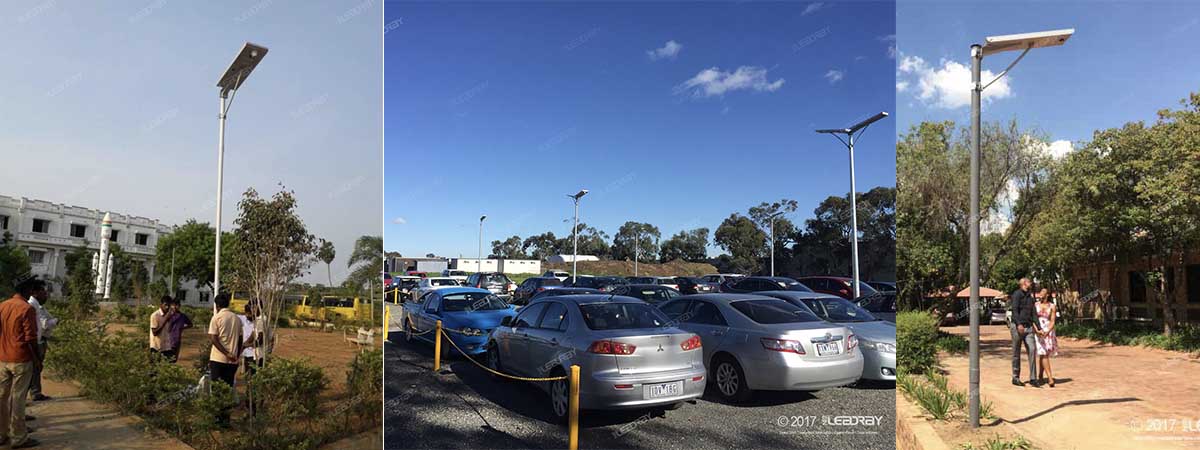Here are the key points of solar street lamps, covering their core components, operational principles, design considerations, and maintenance essentials:
- Purpose: Convert sunlight into electrical energy (DC) via the photovoltaic effect.
- Types:
- Monocrystalline: High efficiency (18–22%), perform well in low light, but higher cost.
- Polycrystalline: Moderate efficiency (15–18%), cost-effective for sunny regions.
- Thin-Film: Lightweight and flexible, but lower efficiency (8–12%), suited for compact designs.
- Key Specs: Power output (W), durability (IP65 waterproof rating, anti-UV coating), and optimal tilt angle (aligned with local latitude for maximum sunlight capture).
- Purpose: Store excess energy from solar panels for use at night or on cloudy days.
- Types:
- Lead-Acid: Low cost, short lifespan (3–5 years), requires maintenance.
- Gel/AGM (Sealed Lead-Acid): Better in cold climates (-30°C), maintenance-free, longer life (5–7 years).
- Lithium-Ion (LiFePO₄): Lightweight, high energy density, 10+ years lifespan, deep discharge capability (80–90% DOD), but higher cost.
- Capacity Calculation: Dependent on daily energy consumption, backup days needed, and system voltage (e.g., 12V or 24V).
- Purpose: Provide illumination with high energy efficiency and longevity.
- Key Features:
- Efficiency: ≥120 lm/W (lumens per watt), 70% more efficient than traditional sodium lamps.
- Lifespan: 50,000+ hours (5–8 years of daily use).
- Light Distribution: Optic designs like bat-wing or elliptical for uniform road coverage (avoid "hotspots").
- Color Temperature: 3000–5000K (warm white for safety, cool white for visibility).
- Purpose: Regulate energy flow between panels, batteries, and lights to prevent overcharging/discharging.
- Types:
- PWM (Pulse Width Modulation): Simple, low cost, 80–85% efficiency (suitable for small systems).
- MPPT (Maximum Power Point Tracking): 95%+ efficiency, optimizes power harvest in low light, ideal for large systems.
- Functions: Time-based dimming (e.g., full brightness for 4 hours, then 50% dim), light sensor activation, and battery health monitoring.
- IoT Integration: Remote monitoring via apps (track battery status, fault alerts, and light performance).
- Motion Sensors: Dim lights during low traffic (e.g., 30% brightness) and brighten when motion is detected, saving 30–50% energy.
- Solar Panel Size: Must generate enough energy to charge the battery daily, accounting for sunlight hours (e.g., 4–6 hours in most regions).
Formula: Panel wattage (W) = (LED power × Daily hours) / (Sunlight hours × Efficiency factor).
- Battery Backup: Ensure 3–5 days of storage for cloudy weather (critical in regions with frequent overcast conditions).
- Pole Height & Spacing:
- Rural roads: 6–8m poles, spaced 15–20m apart.
- Urban roads: 8–12m poles, spaced 20–30m apart (illumination overlap ≈ 3× pole height).
- Pole Material: Hot-dip galvanized steel or aluminum for corrosion resistance, with wind resistance rated for ≥100 km/h (coastal areas may require higher ratings).
- Foundation: Concrete base (depth ≥800mm) to anchor poles securely and prevent tilting.
- Temperature Range:
- Cold climates: Use gel or lithium batteries (rated for -40°C), buried below frost line or with heating pads.
- Hot climates: Ensure lithium batteries have thermal management (cooling fins) to avoid overheating.
- Waterproofing: All components (panels, controllers, batteries) must have IP65 or higher ratings to withstand rain and dust.
- Panel Cleaning: Dust and debris can reduce efficiency by 20–30%, so clean quarterly with water and soft cloth.
- Battery Health: Test voltage levels annually; replace lead-acid batteries every 3–5 years, lithium batteries every 8–10 years.
- Wiring & Connections: Inspect for corrosion or loose terminals, especially in high-moisture areas.
- Dim or Flickering Lights: Indicates low battery charge (check panel alignment or replace batteries).
- No Light at Night: Faulty controller, dead battery, or blocked light sensor.
- Reduced Brightness Over Time: Normal LED degradation (replace fixtures if output drops below 70% of original).
- Initial Cost: $300–$800 per lamp (depending on size and features), 20–50% higher than grid-powered but eliminates electricity bills.
- ROI: 3–7 years in regions with high electricity costs or off-grid locations.
- Savings: Typically $50–$150/year in electricity and maintenance vs. traditional street lamps.
A high-performance solar street lamp system requires precise matching of components (panels, batteries, LEDs), intelligent energy management, and robust design for local climate conditions. Prioritize quality components (e.g., lithium batteries for longevity, MPPT controllers for efficiency) and professional installation to ensure reliability and maximize lifespan (10+ years).



